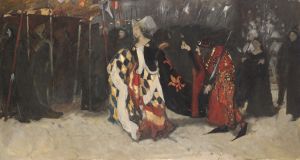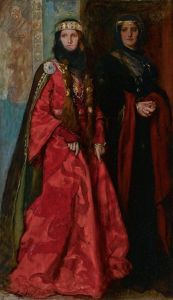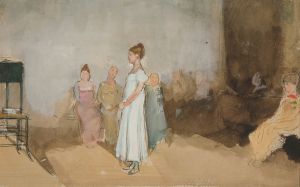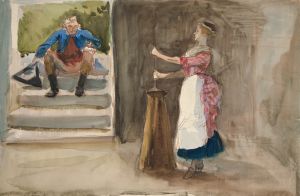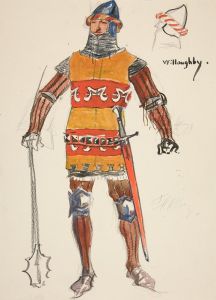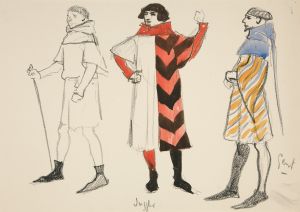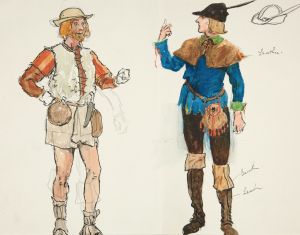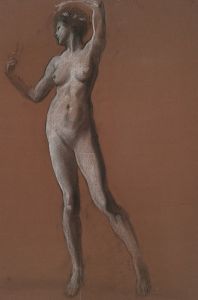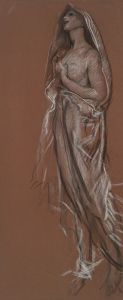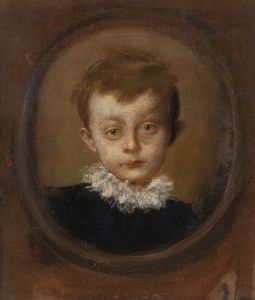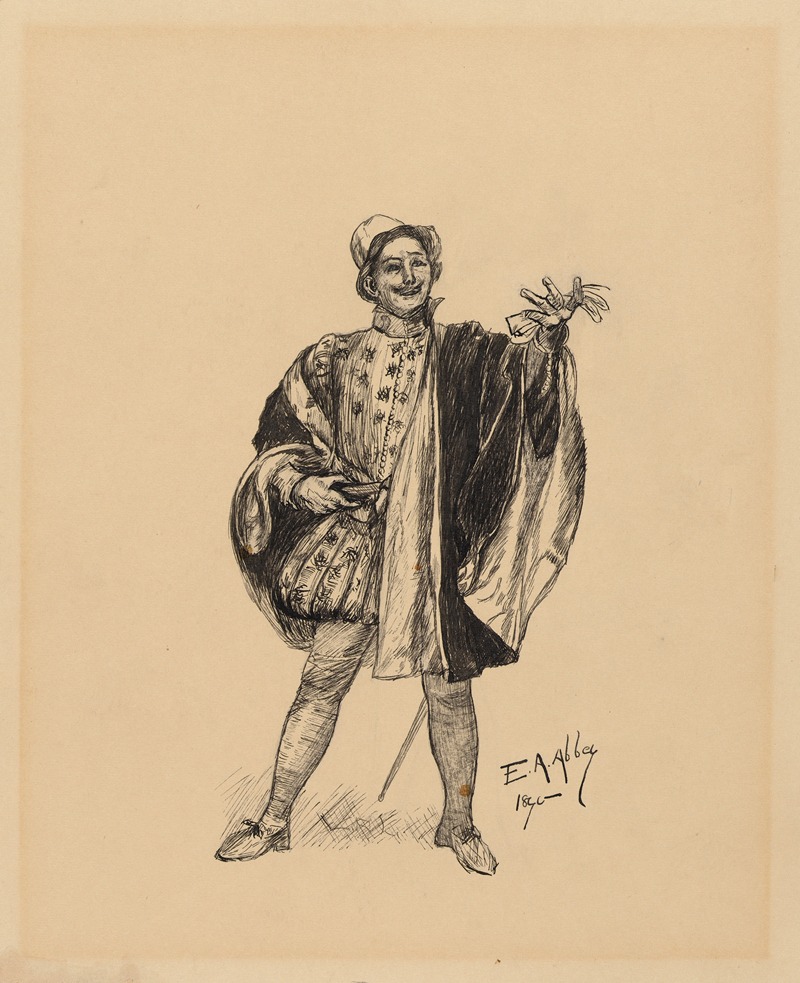
Costumed Actor
A hand-painted replica of Edwin Austin Abbey’s masterpiece Costumed Actor, meticulously crafted by professional artists to capture the true essence of the original. Each piece is created with museum-quality canvas and rare mineral pigments, carefully painted by experienced artists with delicate brushstrokes and rich, layered colors to perfectly recreate the texture of the original artwork. Unlike machine-printed reproductions, this hand-painted version brings the painting to life, infused with the artist’s emotions and skill in every stroke. Whether for personal collection or home decoration, it instantly elevates the artistic atmosphere of any space.
Edwin Austin Abbey was an American artist known for his illustrations and paintings, particularly those depicting scenes from Shakespearean plays and other literary works. One of his notable works is "Costumed Actor," which reflects Abbey's fascination with theatrical subjects and his skill in capturing the essence of performance and character through art.
Edwin Austin Abbey was born on April 1, 1852, in Philadelphia, Pennsylvania. He began his career as an illustrator, contributing to magazines such as Harper's Weekly. Abbey's work was characterized by its attention to detail and historical accuracy, often drawing inspiration from literature and drama. His move to England in 1878 marked a significant period in his career, where he became associated with the Pre-Raphaelite Brotherhood and developed a keen interest in historical and literary themes.
"Costumed Actor" is a painting that exemplifies Abbey's ability to blend historical context with artistic expression. While specific details about the painting's creation and its current location might not be extensively documented, it is known that Abbey frequently explored themes related to the theater. His works often depicted actors in elaborate costumes, capturing the spirit of the characters they portrayed.
Abbey's interest in theatrical subjects was part of a broader trend during the late 19th and early 20th centuries, where artists were increasingly drawn to the drama and pageantry of the stage. This period saw a revival of interest in Shakespearean plays and other classic works, providing rich material for artists like Abbey. His paintings often featured intricate costumes and settings, reflecting his dedication to authenticity and his deep appreciation for the theatrical arts.
In addition to his paintings, Abbey was also known for his murals and large-scale works. One of his most famous commissions was the series of murals for the Boston Public Library, which depicted scenes from the legend of the Holy Grail. These works further established his reputation as an artist capable of handling complex compositions and historical subjects.
Abbey's contribution to the arts extended beyond his paintings. He was a member of several prestigious art institutions, including the Royal Academy of Arts in London and the National Academy of Design in New York. His influence can be seen in the works of other artists who admired his technique and thematic choices.
While "Costumed Actor" may not be as widely recognized as some of Abbey's other works, it remains an important example of his artistic focus and his ability to capture the interplay between character and costume. Abbey's legacy as an artist is marked by his dedication to historical and literary themes, his skillful use of color and composition, and his ability to bring the world of theater to life on canvas.
Edwin Austin Abbey passed away on August 1, 1911, leaving behind a body of work that continues to be celebrated for its beauty and historical significance. His paintings, including "Costumed Actor," remain a testament to his talent and his enduring fascination with the world of drama and performance.





